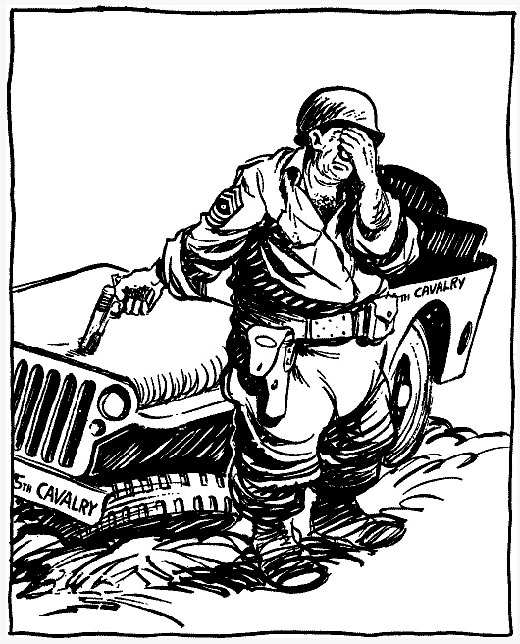 Sgt. Bill Mauldin’s Drawings a Great History Story
Sgt. Bill Mauldin’s Drawings a Great History Story
Courtesy of the Library of Congress
He meant so much to the millions of Americans who fought in World War II, and to those who had waited for them to come home. He was a kid cartoonist for Stars and Stripes, the military newspaper; Mauldin’s drawings of his muddy, exhausted, whisker-stubbled infantrymen Willie and Joe were the voice of truth about what it was like on the front lines.
Mauldin was an enlisted man just like the soldiers for whom he drew; his gripes were their gripes, his laughs their laughs, his heartaches their heartaches. He was one of them. They loved him.
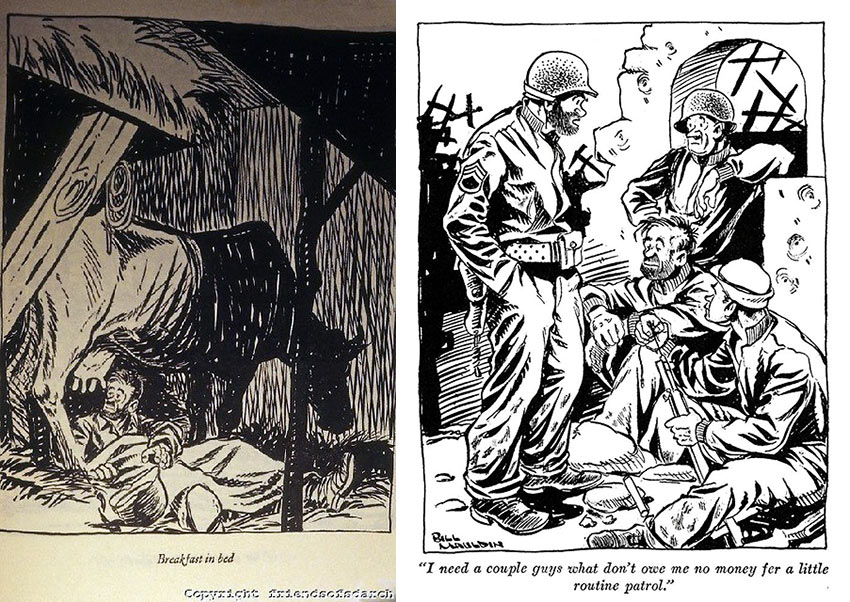
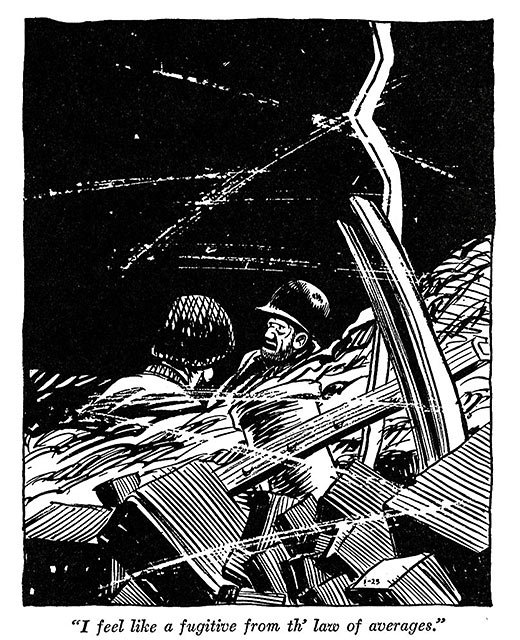 He never held back. Sometimes, when his cartoons cut too close for comfort, superior officers tried to tone him down. In one memorable incident, he enraged Gen. George S. Patton, who informed Mauldin he wanted the pointed cartoons celebrating the fighting men, lampooning the high-ranking officers to stop. Now!
He never held back. Sometimes, when his cartoons cut too close for comfort, superior officers tried to tone him down. In one memorable incident, he enraged Gen. George S. Patton, who informed Mauldin he wanted the pointed cartoons celebrating the fighting men, lampooning the high-ranking officers to stop. Now!
The news passed from soldier to soldier. How was Sgt. Bill Mauldin going to stand up to Gen. Patton? It seemed impossible.
Not quite. Mauldin, it turned out, had an ardent fan: Five-star Gen. Dwight D. Eisenhower, SCAFE, Supreme Commander of the Allied Forces in Europe. Ike put out the word: “Mauldin draws what Mauldin wants.” Mauldin won. Patton lost.

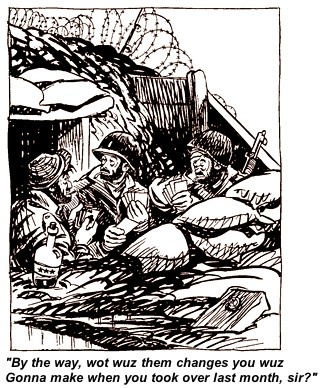 If, in your line of work, you’ve ever considered yourself a young hotshot, or if you’ve ever known anyone who has felt that way about him or herself, the story of Mauldin’s young manhood will humble you. Here is what, by the time he was 23 years old, Mauldin had accomplished:
If, in your line of work, you’ve ever considered yourself a young hotshot, or if you’ve ever known anyone who has felt that way about him or herself, the story of Mauldin’s young manhood will humble you. Here is what, by the time he was 23 years old, Mauldin had accomplished:
He won the Pulitzer Prize and was on the cover of Time magazine. His book “Up Front” was the No. 1 best-seller in the United States.
All of that at 23. Yet, when he returned to civilian life and grew older, he never lost that boyish Mauldin grin, never outgrew his excitement about doing his job, never big-shotted or high-hatted the people with whom he worked every day.
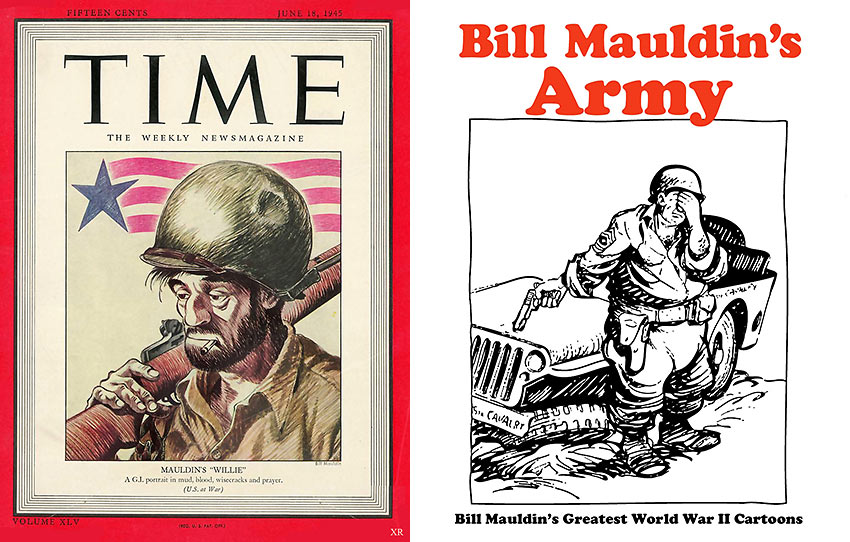
I was lucky enough to be one of them. Mauldin roamed the hallways of the Chicago Sun-Times in the late 1960s and early 1970s with no more officiousness or air of haughtiness than if he was a copyboy. That impish look on his face remained.
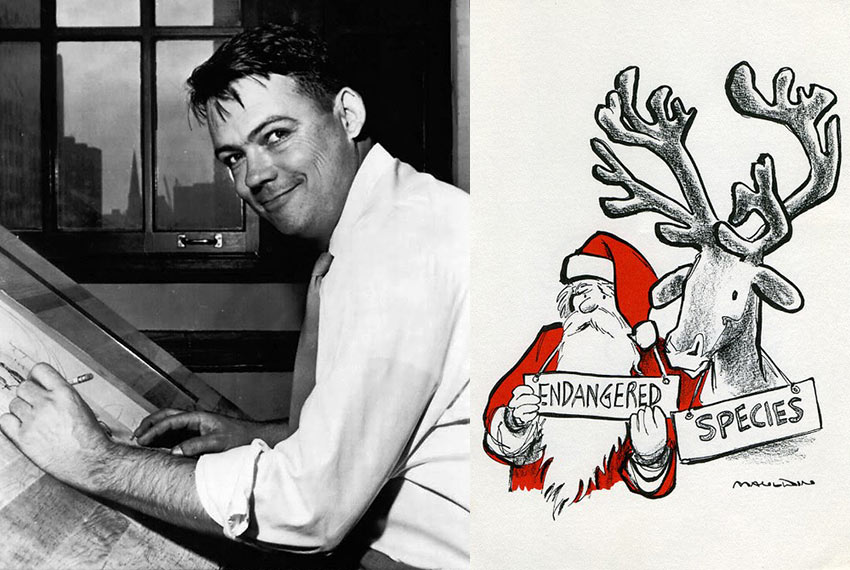
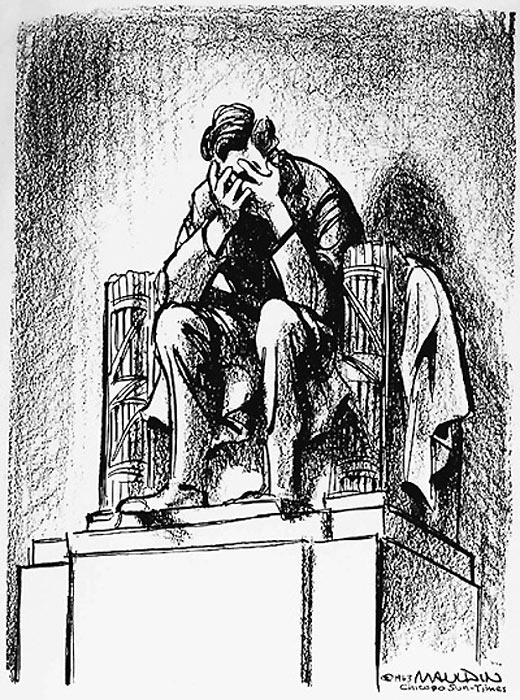 He had achieved so much. He won a second Pulitzer Prize, and he should have won a third for what may be the single greatest editorial cartoon in the history of the craft: his deadline rendering, on the day President John F. Kennedy was assassinated, of the statue at the Lincoln Memorial, slumped in grief, its head cradled in its hands. But he never acted as if he was better than the people he met. He was still Mauldin, the enlisted man.
He had achieved so much. He won a second Pulitzer Prize, and he should have won a third for what may be the single greatest editorial cartoon in the history of the craft: his deadline rendering, on the day President John F. Kennedy was assassinated, of the statue at the Lincoln Memorial, slumped in grief, its head cradled in its hands. But he never acted as if he was better than the people he met. He was still Mauldin, the enlisted man.
During the late summer of 2002, as Mauldin lay in that California nursing home, some of the old World War II infantry guys caught wind of it. They didn’t want Mauldin to go out that way. They thought he should know he was still their hero.
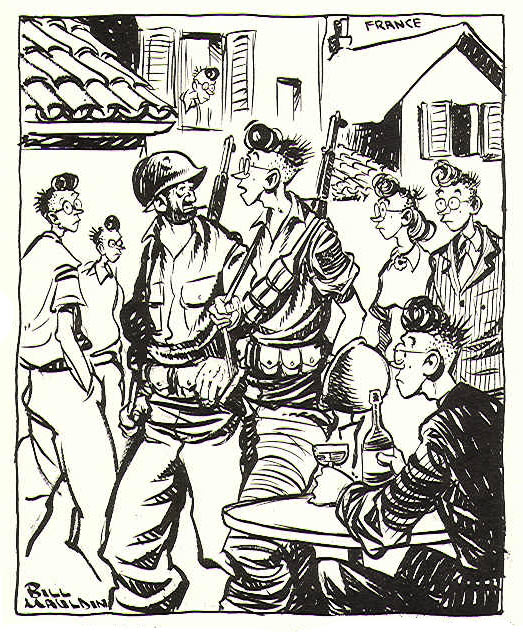
Gordon Dillow, a columnist for the Orange County Register, put out the call in Southern California for people in the area to send their best wishes to Mauldin. I joined Dillow in the effort, helping to spread the appeal nationally, so Bill would not feel so alone. Soon, more than 10,000 cards and letters had arrived at Mauldin’s bedside.
Better than that, old soldiers began to show up just to sit with Mauldin, to let him know that they were there for him, as he, so long ago, had been there for them. So many volunteered to visit Bill that there was a waiting list. Here is how Todd DePastino, in the first paragraph of his wonderful biography of Mauldin, described it:
“Almost every day in the summer and fall of 2002, they came to Park Superior nursing home in Newport Beach, California, to honor Army Sergeant, Technician Third Grade, Bill Mauldin. They came bearing relics of their youth: medals, insignia, photographs, and carefully folded newspaper clippings. Some wore old garrison caps. Others arrived resplendent in uniforms over a half-century old. Almost all of them wept as they filed down the corridor like pilgrims fulfilling some long-neglected obligation.”
One of the veterans explained to me why it was so important: “You would have to be part of a combat infantry unit to appreciate what moments of relief Bill gave us. You had to be reading a soaking wet Stars and Stripes in a water-filled foxhole and then see one of his cartoons.”
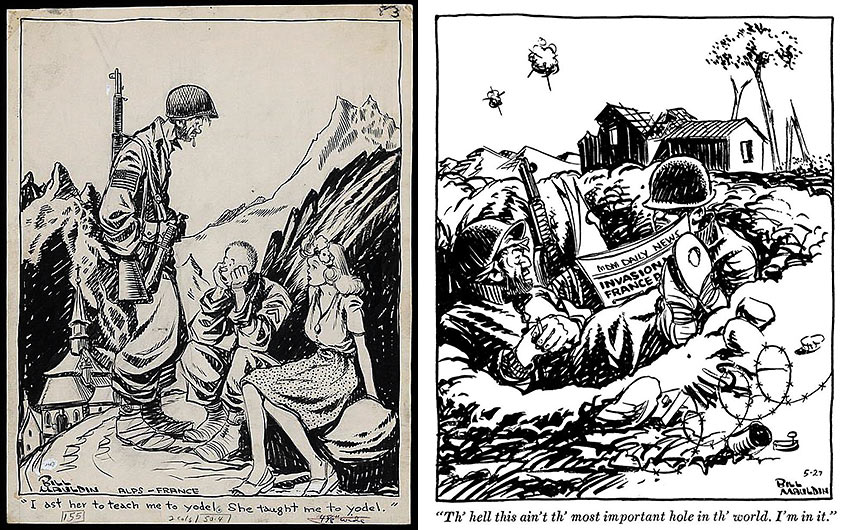
Mauldin is buried in Arlington National Cemetery. Last month, the kid cartoonist made it onto a first-class postage stamp. It’s an honor that most generals and admirals never receive.
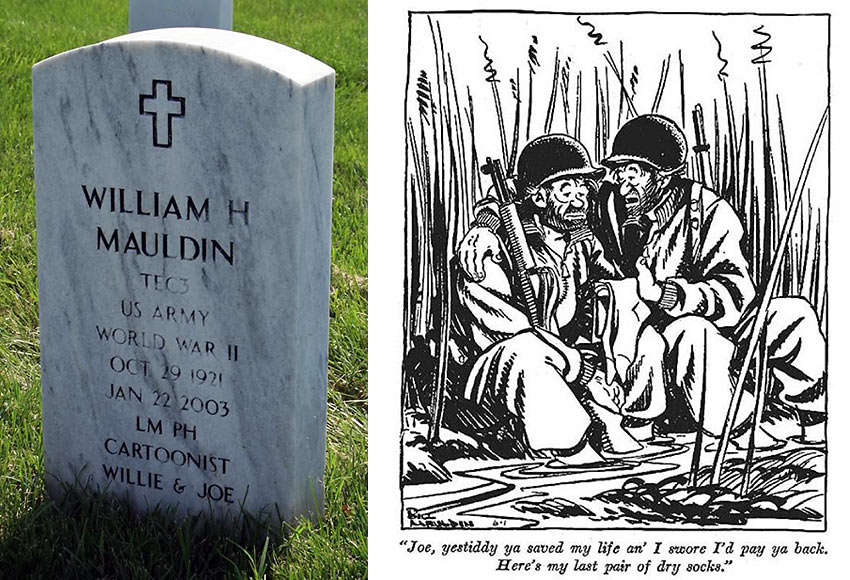
What Mauldin would have loved most, I believe, is the sight of the two guys who keep him company on that stamp.
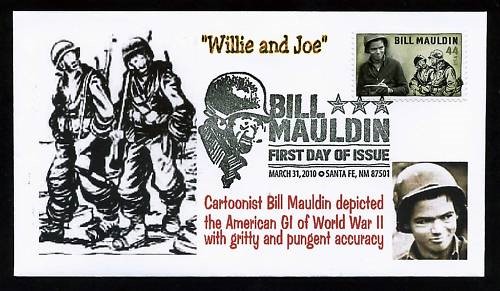 Take a look at it.
Take a look at it.
There’s Willie. There’s Joe.
And there, to the side, drawing them and smiling that shy, quietly observant smile, is Mauldin himself. With his buddies, right where he belongs. Forever.
What a story, and a fitting tribute to a man and to a time that few of us can still remember. But I say to you youngsters, you must most seriously learn of, and remember with respect, the sufferings and sacrifices of your fathers, grandfathers and great grandfathers in times you cannot ever imagine today with all you have. But the only reason you are free to have it all is because of them.
I thought you would all enjoy reading and seeing this bit of American history!
Dormant Butt Syndrome May Be Causing Hip and Knee Pain
Courtesy Alycea Ungaro, PT, MS
Too much time at the computer? Knee pain? Hip tightness? Low back issues?
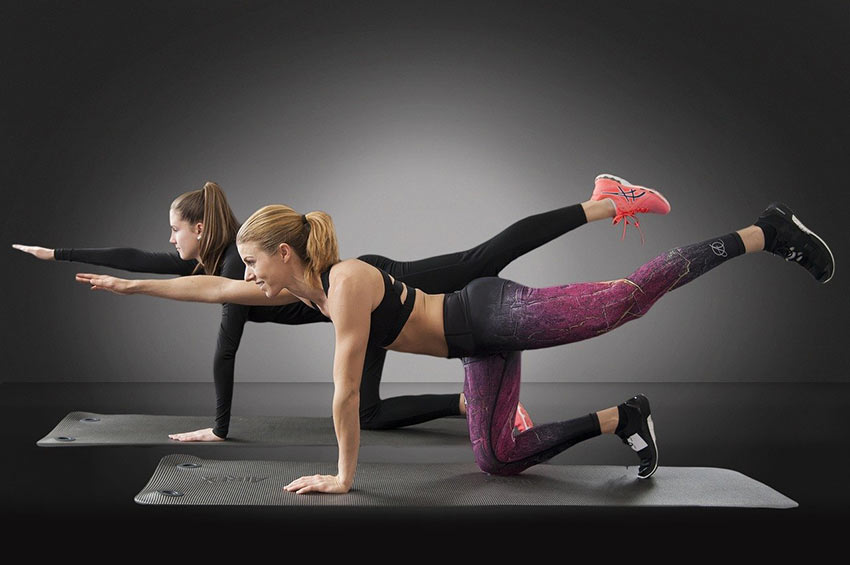
According to research, the problem just might be your butt. More specifically, it may be what scientists are calling “dormant butt syndrome.” It might seem crazy that your problems could be traced back to your rump. Except that it may very well be exactly that.
The Science Behind Dormant Butt Syndrome
Experts have backed up that dormant butt syndrome is real, and while the label is unattractive sounding, it does neatly sum things up. The syndrome is defined as weak buttocks and tight hip flexors.
Experts at the Ohio State Wexner Medical Center worked with patients suffering from knee, hip, or back injuries and now believe that many of these issues are linked to your butt. According to Chris Kolba, P.T., weak buttocks fail to absorb the shock they should during activity, which results in overloading the rest of the joints and can lead to injury. How does this happen? Most often with inactivity, such as sitting for long periods. But dormant butt syndrome can also happen in runners and other active people who simply don’t address this area.
Exercises to Ward Off Dormant Butt
The exercises to target your gluteals and ward off dormant butt are a body of moves identified as hip extension exercises. This is the movement that results from bringing your thigh bone backward in space behind your pelvis. When you walk properly, the back leg should execute hip extension naturally, but poor posture, excessive sitting, and habitually dysfunctional biomechanics mean that many of us walk without achieving optimal hip extension. In turn, the gluteal muscles never get to work and you end up with a series of painful problems.
Thankfully, Pilates can address your gluteals with some tried and true exercises you should have in your toolbox to stave off a potentially dormant butt. Proper Pilates is done with attention to the order, repetition, and variation, so some of these moves have been adjusted to address this particular goal.
Exercise # 1: Swimming
Prep: Lie face down on an exercise mat, arms stretched out in front of you and legs long underneath you. Raise your head and look straight ahead of you. Lift the arms and legs in one motion, keeping them long and lengthened. Support your back by pulling up the abdominals.
Action: Lift the right arm and left leg higher and then briskly start paddling the arms and legs in a swimming motion. Your limbs will alternate as you control your torso. Keep the trunk of the body still and breathe fully and deeply as you go. Swim for a count of 20, then rest and repeat to build strength.
Want more? Perform 3 sets of swimming with a rest in between, but slow the tempo for each set. On each successive set, count to 20 more slowly forcing your arms and legs to work bigger and higher.
Exercise #2: Hamstring Curls
Prep: Lay as you did in the swimming, face down on your exercise mat. Layer your hands one atop the other to create a cushion for your forehead. Bend both knees so your feet point up towards the ceiling. Let your knees be slightly apart, but draw the heels together.
Action: Squeeze the heels together and tuck your tail under, tightening the gluteal muscles. Hold for 3, then release your buttocks. Repeat 10 times and then rest.
Want more? Adding on from the step above. squeeze the heels, tuck your tail under tightening the seat muscles, and then lift the knees and thighs off the mat. Hold for a count of 3 and then lower the thighs to the mat. Repeat 10 times and then rest.
Exercise #3: Shoulder Bridge
Prep: Lie on your back face up on an exercise mat. Bend your knees and place your feet flat, parallel, and just narrower than hip-width apart. The arms are long by your sides and the abdominals are drawn inward and upward.
Action: Press your hips up, creating one long line from your shoulders to your knees. Shift your weight into your heels, digging them down under you to help propel your hips upward. Hold for a count of 10. Lower your hips with control, then repeat twice more for a total of 3 sets.
Want more? You can vary this exercise and the intensity by making this simple change. Perform the first set as above. When you lower your hips, walk your feet a step further away from you and then perform the second set. Before the third and final set, walk your feet yet another step away from the body. It will be harder to lift the hips and you may not get up nearly as high but do your best.
Exercise #4: Leg Pull Up
Prep: Sit tall on your mat with your legs together in front of you. Place your hands just behind your backside on the mat with your fingers pointing forward if possible.
Action: In one movement, elevate your hips. Keep your head up so you can look straight ahead of you. As you balance on your hands and feet, press the legs tightly together and aim to get the hips high enough that you create one long line with your body, from shoulders down to the feet. Hold for a count of 10. Lower and repeat two more times for a total of 3 sets.
Want more? If you’ve mastered the first variation, try it with one leg. For just one of the three sets, try extending one leg up to the ceiling and holding for 5 counts before switching legs.
Exercise #5: Stand Up Straight
Prep: Our standing posture is key to how we use our buttocks. The wall series is the solution. Find a wall and stand tall against it from your heels to the back of your head.
Action: Hold your posture against the wall working the backs of your legs and the length of your spine as firmly into the wall as possible. Work to get the back of your skull into the wall as well. Add some abdominal work by drawing your waistline inward and upward. Hold for up to one minute.
Want more? The alignment you achieved standing at the wall is how you want to hold your body all day. As you move off of the wall, work to maintain that posture throughout your daily life. Repeat the wall exercise several times a day for added benefits.
Closing Thoughts
If hip, back, or knee pain are part of your daily struggles, working on your rump may be the magic pill you’ve been seeking. The cosmetic benefits alone are worth the effort and you may well reduce what ails you in the process. Use this routine daily to ward off the butt syndrome that may be contributing to a host of other bodily issues.


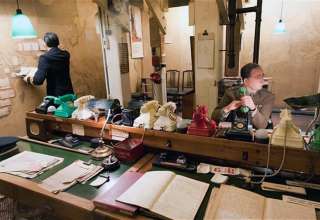



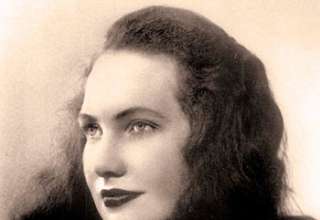

















Jhoei
March 26, 2019 at 3:56 am
What an inspiring story! He deserves all the honor and respect that the American government can give him.